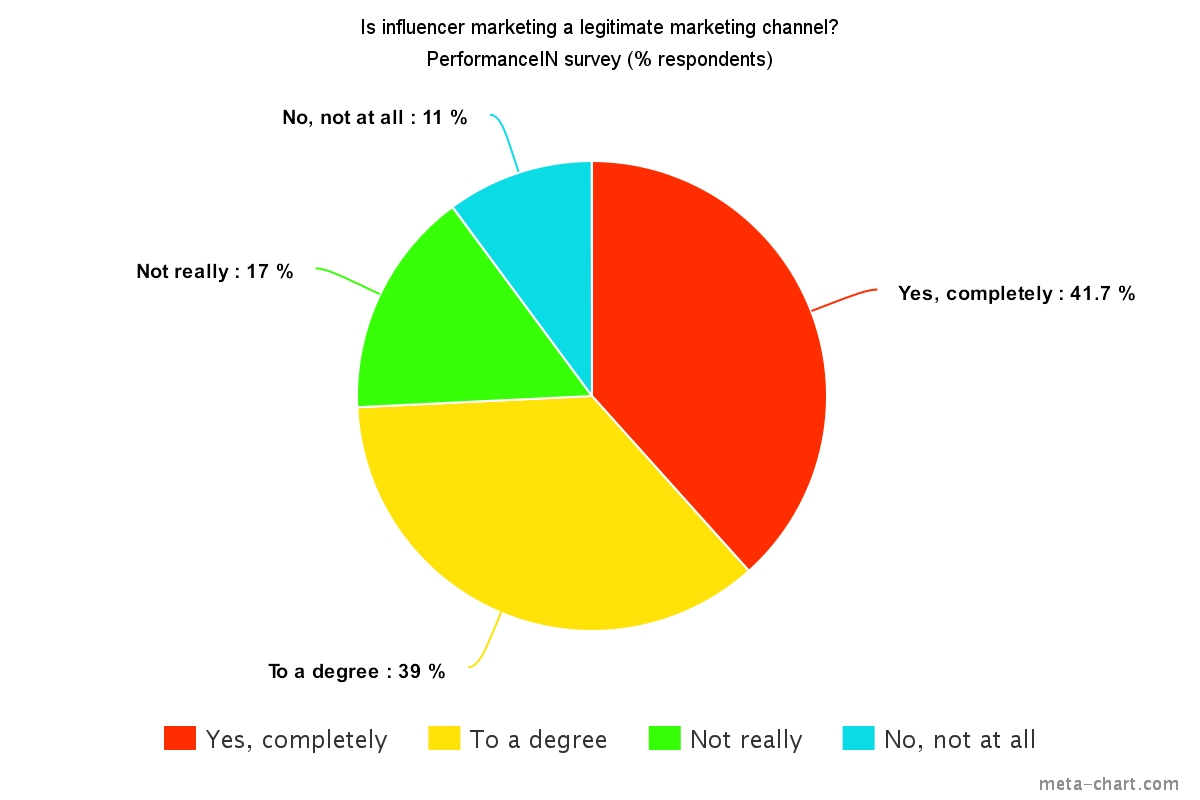With Instagram’s 500 million member klaxon still ringing in the ears, we’re addressing a corner of digital marketing that’s been neither short of phenomenal results or biting criticism in roughly equal measure.
Influencer marketing – not to delve into nuance around how it’s been around for decades or longer – has enjoyed somewhat of a renaissance in recent years.
On one hand you have scathing coverage of brands throwing ad spend at anyone kicking up enough dust among their following. On the other, recent headlines would suggest that the channel – if we can call it that – is reaching a fork in the road to maturity.
An article entitled “Confessions of a social media exec” asserts that too much money has been thrown blindly at influencers without palpable results, while another of many asks whether it’s time to “call bullshit” on the whole practice.
Of course, from the performance marketer’s perspective, a non-guaranteed return means no play. Ahead of an interactive debate on the same subject at Performance Marketing Insights: Europe, led by CJ Affiliate by Conversant, PerformanceIN has surveyed over 100 of its own readers to garner an early consensus from the pay-by-return sphere.
The largest proportion of our sample of readers, 41.7%, responded that influencer marketing can definitively be considered a ‘legitimate’ marketing channel. Given the chance to elaborate, one individual commented that based on a career working within the affiliate industry, influencer marketing is “simply a part” of affiliate marketing “rebranded”.
Indeed, affiliate marketers have long used the reach of successful bloggers to promote discounts and vouchers. According to affilinet, 67% of e-commerce firms are looking to “do more work” with influential figures on Twitter, Facebook and Pinterest, and similar platforms – with incentivisation top of the list.
However, 39% were less committed in their response – replying “to a degree” – and regarded the volume of those commonly labelled as “influencers” as in surplus, creating confusion among both the consumer and marketer. Meanwhile there remains a distinct value in selecting those with genuine authority and influence to disseminate a message.
The right metrics
It also depends what your goals are; one commenter suggested that influencer marketing was a legitimate channel, but exclusively for the objectives of “reach and brand awareness”.
A firm proponent of the technique, CJ Affiliate by Conversant’s director of business development, Jules Bazley, points to why a 28% chunk of the sample appears to believe that “influencer marketing” has no place in the digital marketer’s arsenal – among the legitimate standing enjoyed by channels such as email marketing, PPC and display.
“As an industry, we are continuously tasked with delivering quantifiable and measureable results whilst driving innovative new opportunities that make brands stand out from the crowd.
“In many cases, the success of these [influencer] campaigns is measured on the assumption that it will immediately generate sales which can be linked to the post – an assumption that is often incorrect,” Bazley states.
“In a world that is increasingly focusing on ROI, many campaigns fall short of the mark.”
However, Bazley makes clear that undeveloped forms of performance measurement do not make for a strong enough reason to scuttle a technique that, in many instances, is still being used to great effect, especially when compared to more established and less questionable channels.
Between a $33 million half-minute TV ad for a perfume brand featuring an A-list celebrity and £3,000 YouTube campaign, Bazley asks: “Is either of these more effective than the other when measured proportionally?
It’s a comparison drawn even by the skeptics, with one of the aforementioned articles comparing YouTube blogger Zoella’s average view count with that of ITV’s primetime viewing figures.
Without having a clearly defined measurement, the distinction, Bazley adds, is “impossible” to tell.
Whilst the medium may have evolved leaps and bounds in recent years, buying into the influencer effect should not be a decision based on a pre-paid fee. Instead, brands, networks and agencies should be clear about how to numerate success before attaching payment models that reflect this.
That could include the volume of traffic acquired via a link within the text, the number of shares or likes a photo receives, for example. In addition, advertisers should be well aware of what a successful campaign looks like.
Finally, and most simply; how does the campaign affect sales of consumers that have seen it vs. those who have not? Jules Bazley and Tomas Saulsbury-Hunter talk more on the topic in their session, ‘Baking Influencers into Your Affiliate Strategy’, at Performance Marketing Insights: Europe 2016 next week.
If you’re interested in conducting a research project with PerformanceIN, or commenting in our analysis, we’d like to speak to you – just email our editorial staff at content@performancein.com


